FUNDAMENTALS OF TAIJIQUAN
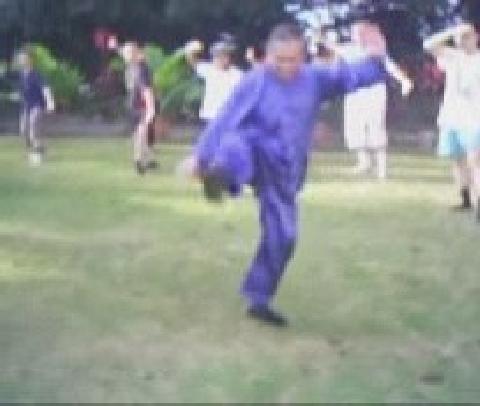
The video clips released in this series serve four main functions:
- To provide resources for those who have taken the Intensive Taijiquan Course to review what they have learnt.
- To provide material for those who wish to prepare for attending an Intensive Taijiquan Course in future.
- To provide some guidance for those who may wish to benefit from our teaching.
- To provide some reference for those who have read about Taijiquan principles but have no idea of their practical manifestations.
Fundamentals of Taijiquan
Many students realize the importance of practicing the basics, but they do not know what the basics mean. They often think that practicing the basics means practicing Taijiquan sets.
Our concept of practicing the basics is different. To use the basics refer to those aspects of Taijiquan training upon which all future development depends. They include
- Entering Tao.
- Stance Training.
- Footwork.
- Body-Movement.
- Fundamental Patterns.
- Six Harmonies.
- Exploding Force.
- Breath Control.
- Rnergy Flow.
- Internal Force.
The video clips in this section show how participants at the Intensive Taijiquan Course of January 2006 in Malaysia learn and practice these basics.
Entering Tao

In Wahnam Taijiquan the first skill students learn is to enter Tao. It is the most important skill in Wahnam Taijiquan, and therefore it is taught right at the beginning of the students' Taijiquan career. Different practitioners experience different attainments according to their developmental stages. Most enjoy a heightened state of mind, others feel charged with internal force, some feel a tremendous sense of peace and freedom, and those who are ready experience Tao or God. Being able to enter Tao enables the practitioners to practice Taijiquan as chi kung.
Zhan Zhuang or Stance Training
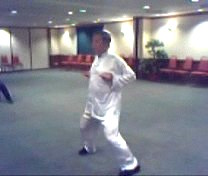
The second most important skill after entering Tao is “zhan zhuang”, or stance training. Hence, it is taught next. In this video clip Grandmaster Wong explains how to practice the Goat Stance and the Horse-Riding Stance correctly. He emphasizes the importance of being upright and relaxed, and explains the principle of yin-yang and how to avoid the weakness of double yang.
Footwork

After learning how to enter Tao and to perform stances correctly, the next important skills are footwork and body-movement. Grandmaster Wong explains the importance of differentiating yin-yang and of rotating the waist. First the students perform in big movements. Gradually the movements are reduced.
Shen-Fa or Body-Movement
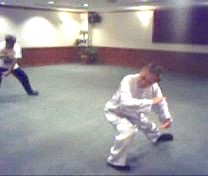
Having taken care of footwork, the next fundamental skill to learn is shen-fa, or body-movement. The onus of body-movement in Taijiquan is the rotation of the waist. Taijiquan classics often mention that the waist is the controller of movements. In Taijiquan, it is frequently the waist that moves the hands. The co-ordination of the legs, the hands and the body constitutes the “three external harmonies”. The “three internal harmonies” refer to “jing”, “qi” and “shen” or essence, energy and mind.
The Six Harmonies
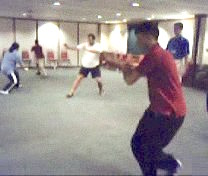
Having learnt the patterns “Immortal Waves Sleeves”, “Double Dragon Plays with Pearl”, “Push Boat According to Flow”, “Black Bear Sinks Hips” and “Open Window to Look at Moon” — which collectively form the pattern known as “Grasping Sparrow's Tail” in Yang Style Taijiquan — course participants perform these patterns moving about in various stances. They also pay much attention to graceful, flowing movements, energy flow and mental focus. Hence, they practice the “six harmonies” — the harmonies of legs, body, hands, elegance, energy and mind.
Cloud Hands
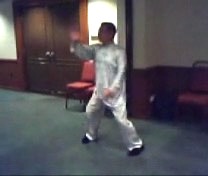
It is reputed that the great Taijiquan master, Yang Lu Chan, practiced “Grasping Sparrow's Tail” thousands of times everyday. He was so skillful that he used only this pattern to defeat all challengers. But actually “Grasping Sparrow's Tail” was formulated later by his grandson, and its fore-runner was probably “Cloud Hands”. Hence, it was probable that Yang Lu Chan practiced “Cloud Hands” everyday. “Cloud Hands” is not a pattern with fixed forms, it is a general term for a collection of flowing movements. Here Sifu Wong shows some typical “Cloud Hands” movements.
Flowing Water Floating Clouds
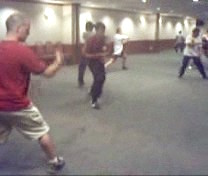
“Cloud Hands” is a shortened form of “Flowing Water Floating Clouds Hands”. When Taijiquan practitioners perform flowing movements in flowing footwork without beginning and without ending, they are like flowing water and floating clouds. They enjoy a chi flow after the “Cloud Hands” movements.
Fa-Jing or Explode Force
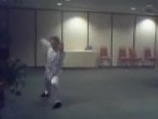
Sifu Wong shows how course participants can link together the various patterns they have learnt, namely “Cloud Hands”, “Carry the Cosmos”, “Immortal Waves Sleeves”, “Double Dragon Plays with Pearl”, “Push Boat According to Flow”, “Black Bear Sinks Hips”, and “Push Window to Look at Moon”. They add two other patterns, “Fisherman Casts Net” and “Single Whip”. Sifu Wong explains that “Single Whip” is excellent for training “fa-jing”, or explode force.
Taijiquan Kicks
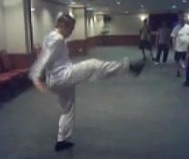
It is alarming that many Taiji practitioners have injured their knees due to incorrect movement. In this video Sifu Wong demonstrates how a Taijiquan practitioner should move, following the principles passed down by past Taijiquan masters, such as differentiating yin-yang, rotating the waist, and starting with the back leg and completing with the front hand. Sifu Wong also demonstrates two Taijiquan kicks, namely thrust kicks and organ-seeking kicks.
Composing Sets from Patterns
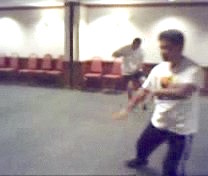
Course participants link the five basic patterns of “Immortal Waves Sleeves”, “Double Dragons Play with Pearl”, “Push Boat According to Flow”, “Black Bear Sinks Hips” and “Open Windows to Look at Moon” — collective known as “Grasping Sparrow's Tail” in Yang Style Taijiquan — in various combinations and practice them in moving stances. Sifu Wong explains that this is one way how a set is composed.
White Crane Flaps Wings
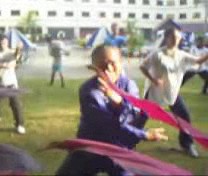
Sifu Wong leads the class in performing the fundamental set, “White Crane Flaps Wings”. Although this set is short, it includes all the four categories of attack and their defence. It also enables practitioners to practice it for generating energy flow to overcome pain and illness, or to promote health, vitality and longevity. It can also be used for internal force training or spiritual cultivation. It is incredible what a short, simple set can do if one has the necessary skills.
A Set for Many Purposes
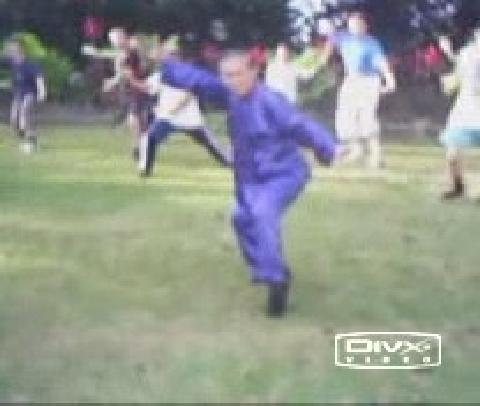
This video clip shows the concluding part of the fundamental set, “White Crane Flaps Wings”. Notice the co-ordination of footwork, body-movement and hand movement, the rotation of the waist and the differentiation of yin-yang. This set is very versatile. After acquiring basic skills from this course, participants may perform the set or part of it in various ways for different purposes. They may, for example, repeat certain patterns to develop flowing energy or internal force, perform combinations of different patterns for combat application, or the whole set for breath control and elegant movement.
LINKS
